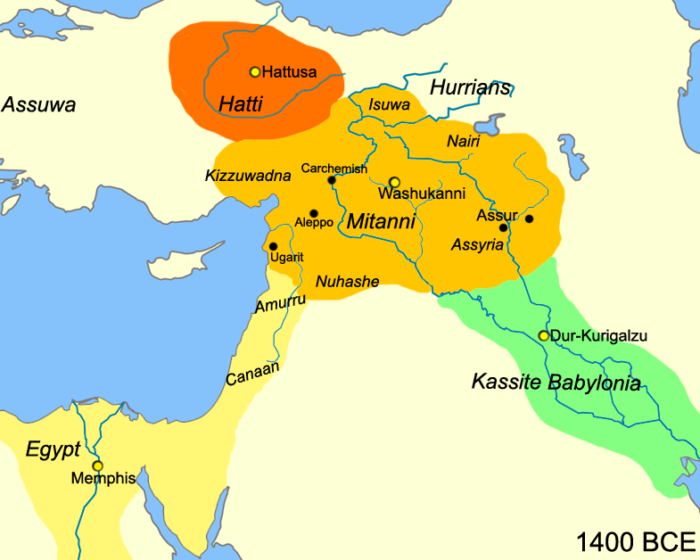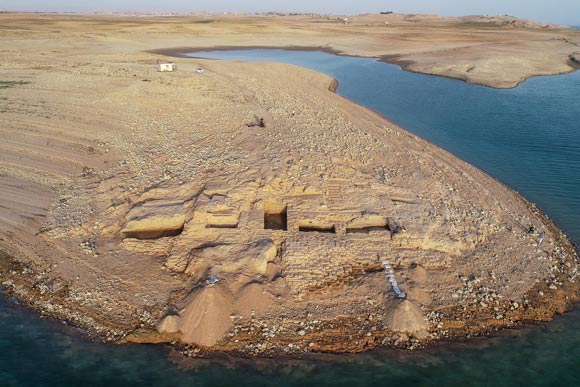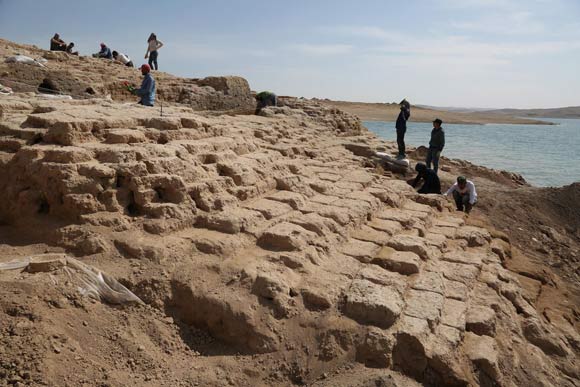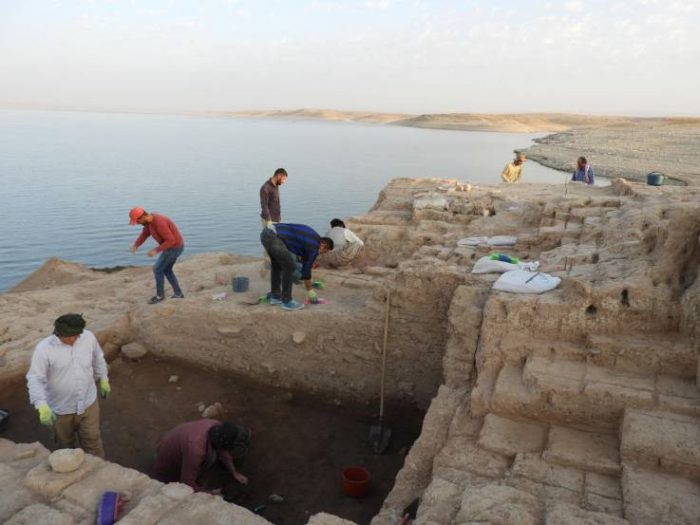
Mitanni_Empire_Near_East_1400_BCE
The Middle East has been home to numerous civilizations over the course of its long and tumultuous history. While the region’s past is well-studied, one of these societies we know very little about—the so-called Mittani Empire, which stretched from the Eastern Mediterranean to the Assyria – modern-day Iraq during the 15th and 14th centuries B.C. The site of Kemune on the eastern Tigris can be dated to the time of the Mittani Empire, which dominated large parts of northern Mesopotamia (modern day Iraq) and Syria from the 15th to the 14th century BCE.

An aerial view of the Kemune palace from the west. Image credit: University of Tübingen / Kurdistan Archaeology Organization.
Now, an international team of archaeologists has uncovered the ruins of an ancient palace on the banks of the Tigris in Northern Iraq’s Kurdish region. The region was once part of the famed Assyrian Empire for thousands of years. This discovery could reveal fascinating new details about this mysterious civilization.
The palace site, known as Kemune, was first discovered in 2010. Until recently it was covered by water from the Mosul Dam reservoir. However, last autumn, these waters receded in the face of a drought. A joint German-Iraqi team was then able to investigate the remains for the first time.
These excavations revealed a palace building, which would have once stood on an elevated terrace, majestically overlooking the river valley. Made of mud bricks, the palace contains huge walls, which in some places are up to 6.5 feet high.
The researchers identified several different rooms, with some even containing plastering on the walls. The team suggests that due to the layout, the palace was likely in use for quite a long period of time.
“We have also found remains of wall paintings in bright shades of red and blue,” Ivana Puljiz, another researcher involved in the project from the Tübingen Institute for Ancient Near Eastern Studies (IANES), said in a statement. “In the second millennium B.C., murals were probably a typical feature of palaces in the Ancient Near East, but we rarely find them preserved. So discovering wall paintings in Kemune is an archaeological sensation.”
In ancient times, the Kemune palace stood on an elevated terrace above the valley, only 65 feet (20 m) from what was then the eastern bank of the Tigris River.

A terrace wall on the western side of the Kemune palace. Image credit: University of Tübingen / Kurdistan Archaeology Organization.
In the Mitanni period, a monumental terrace wall of mud-bricks was built against the palace’s western front to stabilize the sloping terrain.
According to the team, the ruins of the palace are preserved to a height of about 23 feet (7 m).
“Two phases of usage are clearly visible, indicating that the building was in use for a very long time,” Dr. Puljiz said.
Inside the palace, the archaeologists identified several rooms and partially excavated eight of them. In some areas, they found large fired bricks which were used as floor slabs.

A room in the palace during excavations. University of Tübingen / Kurdistan Archaeology Organization.
They also found 10 clay tablets with inscriptions in Mitanni cuneiform.
“One of the tablets indicates that Kemune was most probably the ancient city of Zakhiku, which is mentioned in one Ancient Near Eastern source as early as the Middle Bronze Age (1800 BCE),” they said.
“This indicates the city must have existed for at least 400 years. Future text finds will hopefully show whether this identification is correct.”